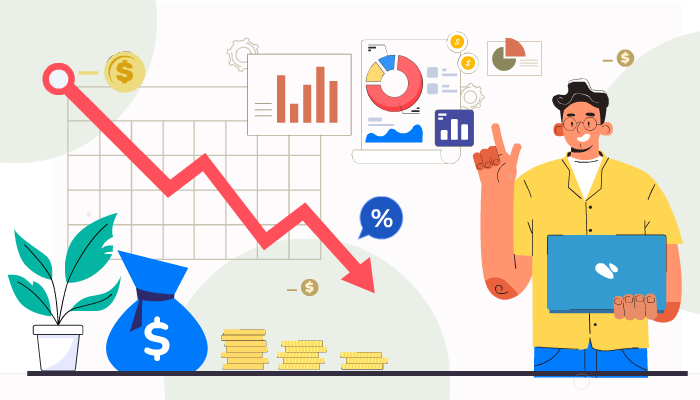Business means you either step forward into growth or you simply step back in the cocoon of your safety. Those who dared to dream had new avenues in front of them with outsourcing being one of them and big tech is the biggest example. The juggernaut simply refuses to stop!
It won’t be far from the truth if we say that outsourcing helped these businesses not only save money and time but also got them a large pool of talented resources, helping them became bigger and better.
Why? Because while this business process eliminates production and labour costs, it also means that quality has to be top notch. After all, quality trumps everything.
Moreover, there are two main models of this business process – one that includes project outsourcing and the one that works on the Virtual Employees model, and depending on the business model, one can make the most out of it.
But what is business, if not choices?
And what if we tell you that Virtual Employee model is safer than Project Outsourcing? What if tell you that the former eliminates most risks project outsourcing is fraught with? But how?
It is the choices that define our successes and failures and they are for the better when we make an informed choice.
Here’s why hiring Virtual Employees is much safer than getting your project outsourced:
Serious business, serious decisions
In order to understand that, first let us take a look at the characteristics of both types of outsourcing models and how they work.
When you outsource a project, the very first step is telling the vendor what the project is about and the vendor works on the “how” of the project within a given time. This marks the end of the project outsourcing.
In the project management outsourcing business model, you are essentially handing over the project to the vendor to be completed. This enables the project outsourcing company to have complete control over the management of the project. While in some projects, this hassle is just not worth it, in some, it has its risks.
However, this is turned on its head when you hire virtual employee, the outsourcing company does not manage your project and you retain the right to make all the calls – from start to finish.
Essentially, the virtual staff outsourcing is a blend of both – the outsourcing model and the offshoring model. This biggest benefit of the employing virtual employee services is that you are provided with all the resource solutions until your project is complete.
And then it is always a plus when the outsourcing company is offshore which means the client organization will save big on the money.
When you are outsourcing project work, it means that you are not with them overseeing the project and deviation from the set path may occur. For example, there is a risk of your project being jeopardized when the company is unable to back their big talk and deliver. There is also a risk of “unforeseeable costs” or “overshooting project budgets” where your project may very well be held on “ransom” by the third-party. This makes you lose not only money but your time-sensitive project.
However, in the offshoring model, all the above mentioned powers remain with you. Moreover, Virtual Employee model also reduces the possibility of ‘disagreement’.
You can go ahead and also decide to have one of more resources or build a whole team to work on your project. You also get to decide the number of hours you want them to work for.
Translate the knowledge transfer
Things are always easier said than done. And this becomes a big problem with knowledge transfer. When you share knowledge on a project, there is always a possibility that the concept and vision behind the project may simply get lost in translation. Explicit knowledge remains universal and is understood to have an absolute meaning, tacit knowledge, on the other hand, can be very tricky for it needs experience.
Instructions, after all, depend on the understanding of the receiver for they decide what and how to do it. So, you may have shared the knowledge but has it been successfully transferred?
This means that when you are project outsourcing with complex set of instructions that involve both explicit and tacit knowledge, the end result won’t be completely error-free and your project ends up taking the different path from your vision.
The result – your project you expected will deviate from what you visualized.
In the Virtual Employee model, however, an immediate feedback on it would correct the course but if you are working with project management outsourcing companies, this important step would go amiss as your project would stay with the vendor until its completion.
Additions, Modifications, Maintenance and Upgrades
Unlike project outsourcing, you won’t need to wait for the project work to be completed to assess where you need all the above.
As explained above, your decisions are everything when it comes to the offshoring model and it holds true for any additions, modifications, maintenance or upgrades you want at any stage of the project – during and after.
For example, halfway into the project, you can add more resources and scale your project and you can reduce that in the same vein too. After the project is done, you can choose to modify it and work on the maintenance and upgrades your project may need later on.
To put it succinctly, Virtual Employee outsourcing reduces business risks linked to control of the project, resource management, knowledge transfer and health of the project long after it done and over with. Virtual Employee is safer than project outsourcing as virtual staff outsourcing corrects the risks which are mostly posed in the latter.







